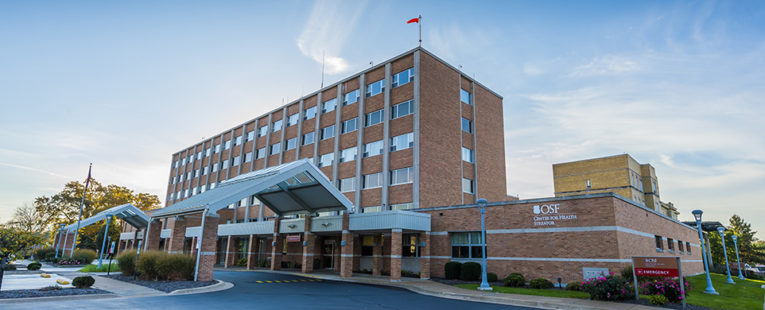Hospital systems around the world share a common problem: a repetitive cycle of readmissions by certain patients. Research indicates there are a variety of reasons some people end up returning to the hospital following discharge including health complications and type of insurance. Then there are reasons that tend to impact vulnerable populations such as homelessness, a lack of transportation, the inability to pay for medications and hunger.
With so many social service agencies serving the needs of the disadvantaged, one startup based out of Dallas, Texas wondered how hospitals could better connect with these organizations to get patients the help they need and stop the cycle of readmissions. As a result, the company, Pieces Technologies developed a cloud-based platform called Pieces Iris that allows hospitals to refer patients to community-based organizations that help those in need.
As part of OSF Innovation, OSF Innovation Partnerships works nationally to find or create innovative solutions for More for Those with Less, one of four focus areas that guide our investments and activities in innovation. We wanted to partner with Pieces to pilot this software in Streator where OSF HealthCare has created a new, sustainable model for health care that aims to care for the whole person and establish healthier rural communities.
How Pieces Iris works
Pieces Iris is a referral connection and case management platform designed for community-based organizations. In Streator, OSF HealthCare invited ten groups to participate in the pilot. Once hospitals or, in this case, OSF HealthCare Center for Health – Streator, identify patients who are in need of certain services, they send referrals to organizations using the Iris software.
Those social service groups then help these patients with whatever needs they may have whether it be finding a place to sleep or getting access to healthy foods and exercise. These groups can also easily communicate with each other to discuss what services they have offered and they can even invite other community organizations to participate. The idea is to build a community of social service groups that can work together and raise their effectiveness to meet community needs.
“In the short time we have implemented Pieces Iris, agencies on the platform are helping get the word out to groups that are not in the network to ensure all of the needs of our patients are being met,” said Matthew Warrens, Vice President of Innovation Partnerships for OSF HealthCare.
In addition, Pieces Iris monitors all of this activity and ensures health care facilities are making progress toward impacting outcomes such as readmissions and improving workflow.
“Complex Care Managers within the OSF HealthCare Center for Health in Streator can see that a referral they made was completed by a patient,” said Warrens. “If not, they can reach out to the patient with an intervention to re-engage them.”
Warrens says to make the Iris tool even more valuable to the health care system, the Healthcare Analytics team at OSF HealthCare has worked with Pieces Technologies to build a predictive readmission tool. Pieces DS uses natural language processing and an advanced form of artificial intelligence to review patient data within an Electronic Medical Record and easily identify patients with social needs. OSF HealthCare will soon pilot this software to work in tandem with the Iris platform.
Caring for the whole person
As we work to redefine the rural health care model to focus on health and wellness, we believe we need to tackle those issues outside of health care that are negatively impacting a patient’s ability to either be healthy or get better. We know we can’t do this alone.
We believe partnering with communities and the social service organizations within them will help us better target those with the most needs, not only ensuring the health of an individual but of the entire community.
Pieces Iris is just one of the many solutions brought forth by OSF Innovation’s continued efforts to partner locally, regionally and nationally to solve the most complex challenges in health care. This software has not only made communication easier between our health care system and social service organizations, it’s more importantly connected individuals to the services they need to live healthier lives.
Last Updated: February 9, 2022
